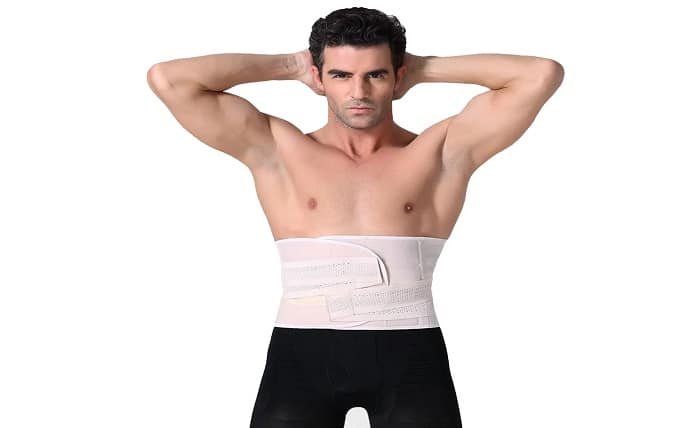Waist Trainer: The Ultimate Guide to Benefits, Risks, and How to Use Safely

A waist trainer is a popular shaping garment designed to compress the midsection, creating an hourglass silhouette. Many people use waist trainers for waist reduction, posture improvement, and temporary slimming effects. Whether for special occasions or daily wear, waist trainers have gained significant attention in the fitness and fashion industries.
How Does a Waist Trainer Work?
A waist trainer applies consistent pressure around the waist, helping to reshape the torso over time. Made from materials like latex, neoprene, or steel boning, waist trainers compress fat and encourage sweating. While they don’t permanently reduce fat, waist trainers can provide instant slimming effects and support waist training when combined with exercise.
Benefits of Using a Waist Trainer
Waist trainers offer several potential benefits, including temporary waist slimming, improved posture, and core support. Some users report reduced appetite due to gentle stomach compression. Additionally, waist trainers can enhance confidence by creating a more defined waistline under clothing. However, results vary depending on consistency and body type.
Potential Risks and Side Effects of Waist Trainers
While waist trainers can be effective, improper use may lead to health risks. Over-tightening can cause breathing difficulties, acid reflux, and reduced lung capacity. Long-term compression might weaken core muscles if relied upon excessively. It’s crucial to wear waist trainers in moderation and consult a doctor if you experience discomfort.
Different Types of Waist Trainers
There are various waist trainer styles, including corsets, latex waist cinchers, and adjustable hook-and-eye trainers. Steel-boned corsets provide strong shaping, while flexible latex trainers are ideal for workouts. Choosing the right waist trainer depends on comfort, purpose, and desired level of compression.
How to Choose the Best Waist Trainer for You
Selecting the right waist trainer involves considering material, size, and intended use. Beginners should start with adjustable, breathable options. Look for waist trainers with reinforced stitching and proper boning for durability. Always measure your waist accurately and follow sizing guides to avoid excessive tightness.
How to Wear a Waist Trainer Safely
To use a waist trainer safely, start with short sessions (1-2 hours daily) and gradually increase wear time. Avoid sleeping in a waist trainer and never tighten it to the point of pain. Pair waist training with core-strengthening exercises for better long-term results. Hydration and breaks are essential to prevent discomfort.
Waist Trainers for Postpartum Recovery
Many new mothers use waist trainers to support abdominal muscles after childbirth. Postpartum waist trainers can help with core stability and gentle tummy tightening. However, consult a doctor before using one, especially after a C-section, to ensure safe and proper healing.
Waist Trainers and Weight Loss: Fact vs. Myth
Waist trainers alone do not cause fat loss—they only redistribute fat temporarily. For real weight loss, combine waist training with a healthy diet and exercise. Sweating in a waist trainer may lead to water weight loss, but this is not permanent fat reduction.
Celebrities and Waist Trainers: Do They Really Work?
Celebrities like Kim Kardashian and Jessica Alba have popularized waist trainers, but their dramatic results often involve strict diets and workouts. While waist trainers can enhance curves, they are not a magic solution for a perfect figure. Realistic expectations are key.
Waist Trainers vs. Corsets: What’s the Difference?
Traditional corsets are rigid and designed for extreme waist reduction, while modern waist trainers offer more flexibility for daily wear. Corsets require breaking in, whereas waist trainers can be worn immediately. Both provide shaping, but waist trainers are generally more comfortable for active lifestyles.
How Long Does It Take to See Results from a Waist Trainer?
Results vary based on body type and consistency. Some users see instant slimming effects, while waist training for permanent reshaping may take months. Regular use, proper sizing, and combining with exercise can enhance results over time.
Common Mistakes When Using a Waist Trainer
Common mistakes include wearing a waist trainer too tight, skipping breaks, and expecting permanent fat loss. Overuse can lead to muscle atrophy and digestive issues. Always follow guidelines and listen to your body’s signals.
Best Exercises to Pair with Waist Training
For optimal results, combine waist training with core workouts like planks, Russian twists, and cardio. Strengthening oblique muscles helps maintain a toned waistline even without a trainer. Avoid over-relying on waist trainers for support during exercise.
Waist Trainer Maintenance and Care Tips
To prolong your waist trainer’s lifespan, hand wash it with mild soap and air dry. Avoid wringing or machine washing, as this can damage boning and elasticity. Rotate between multiple waist trainers to prevent excessive wear and odor buildup.
Where to Buy a High-Quality Waist Trainer
Reputable brands like Ann Chery, Waist Gang Society, and Corset Story offer durable waist trainers. Check reviews, materials, and return policies before purchasing. Avoid cheap, poorly constructed trainers that may cause discomfort or injury.
Conclusion
Waist trainers can be a useful tool for temporary slimming and posture support, but they are not a substitute for healthy habits. When used correctly, waist trainers enhance confidence and body shaping. Always prioritize safety and realistic expectations for the best experience.
FAQs
1. Can a waist trainer help me lose belly fat?
No, waist trainers only compress fat temporarily and do not burn belly fat. For fat loss, combine waist training with diet and exercise.
2. How many hours a day should I wear a waist trainer?
Beginners should start with 1-2 hours daily, gradually increasing to 6-8 hours if comfortable. Never sleep in a waist trainer.
3. Are waist trainers safe for long-term use?
Excessive use can weaken core muscles and cause health issues. Use in moderation and take regular breaks.
4. Can waist trainers help with posture?
Yes, some waist trainers provide back support, promoting better posture when worn correctly.
5. Do waist trainers work for men?
Yes, waist trainers can help men achieve a slimmer waistline, but they should choose styles designed for male body shapes.




